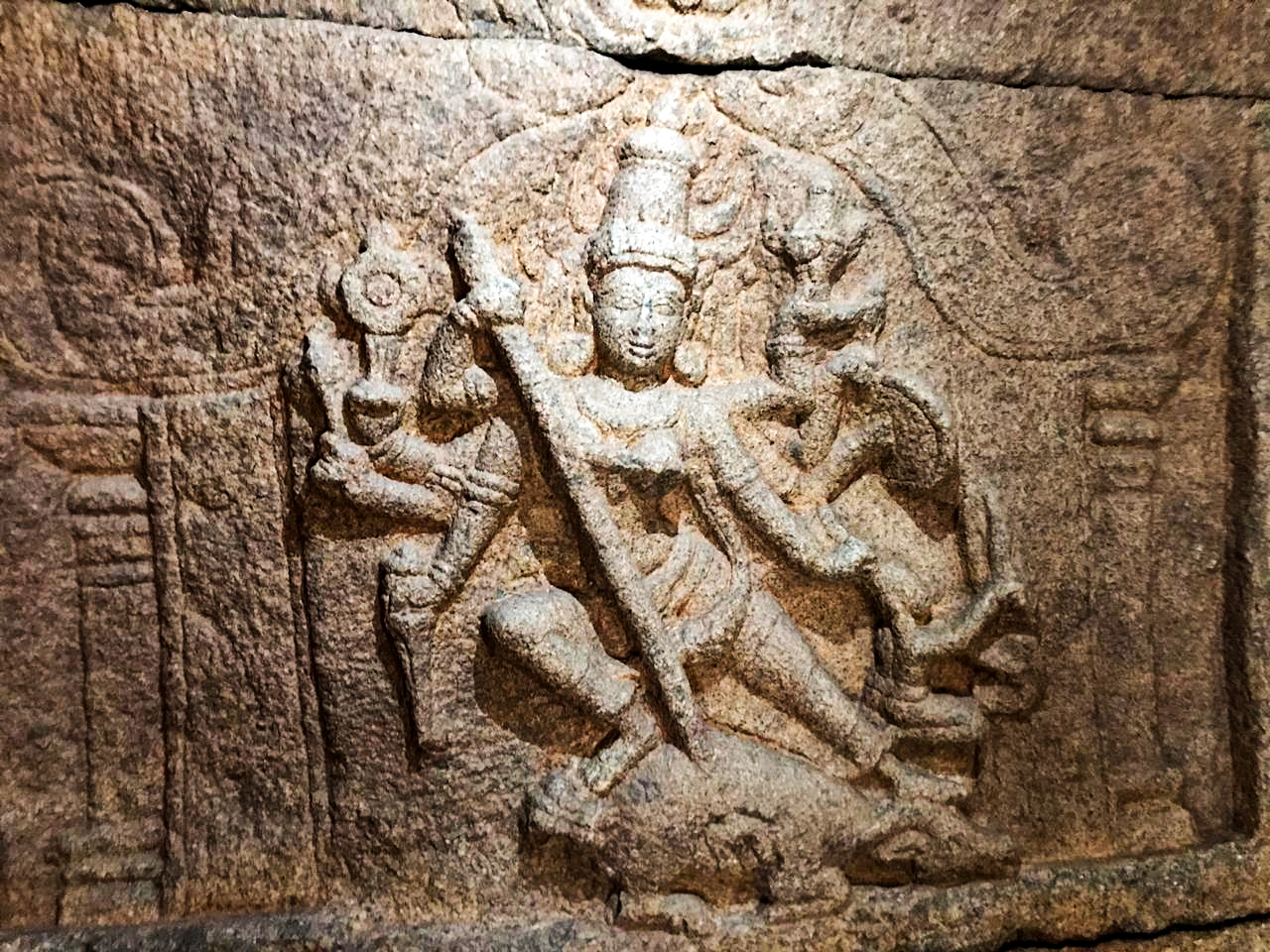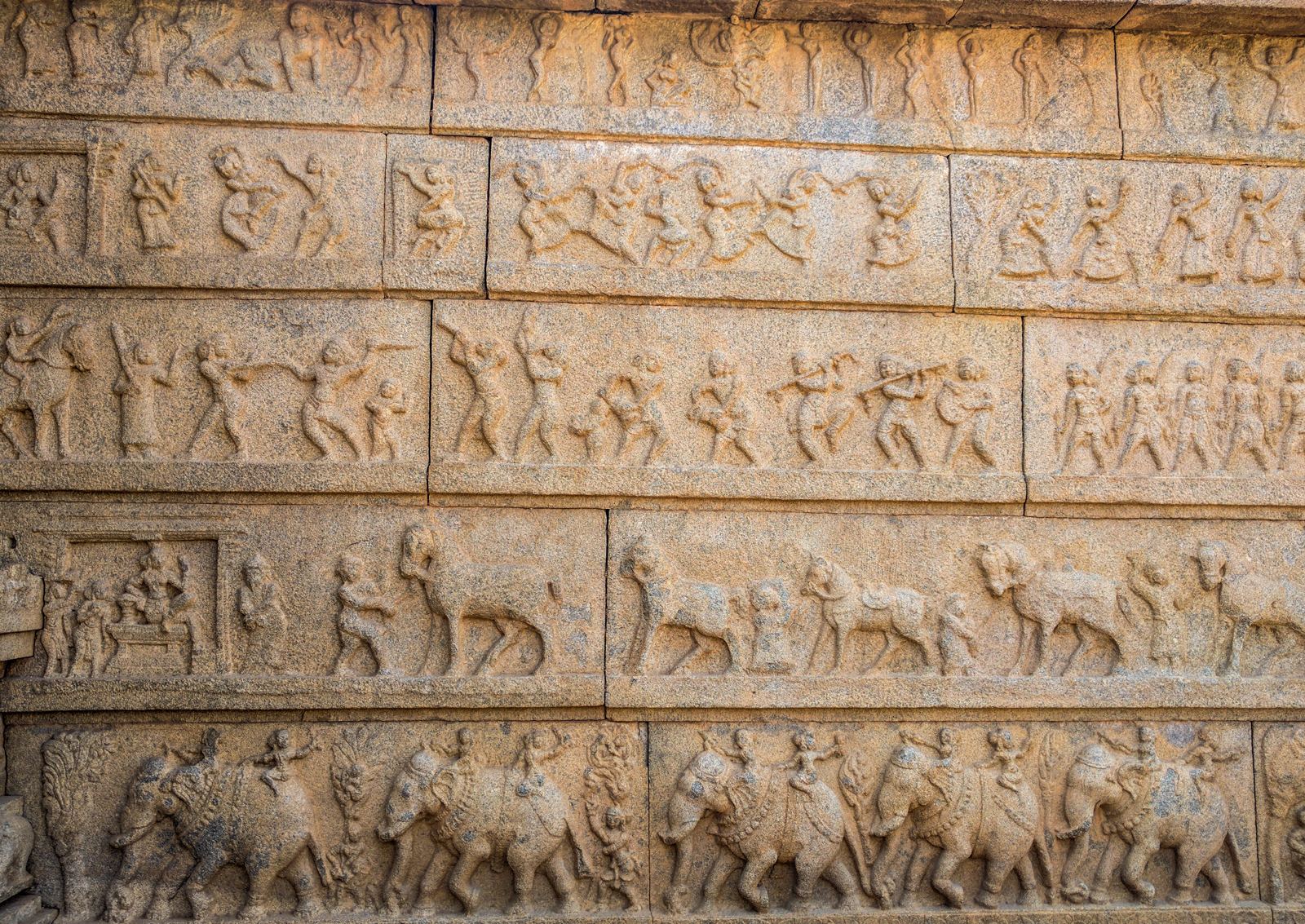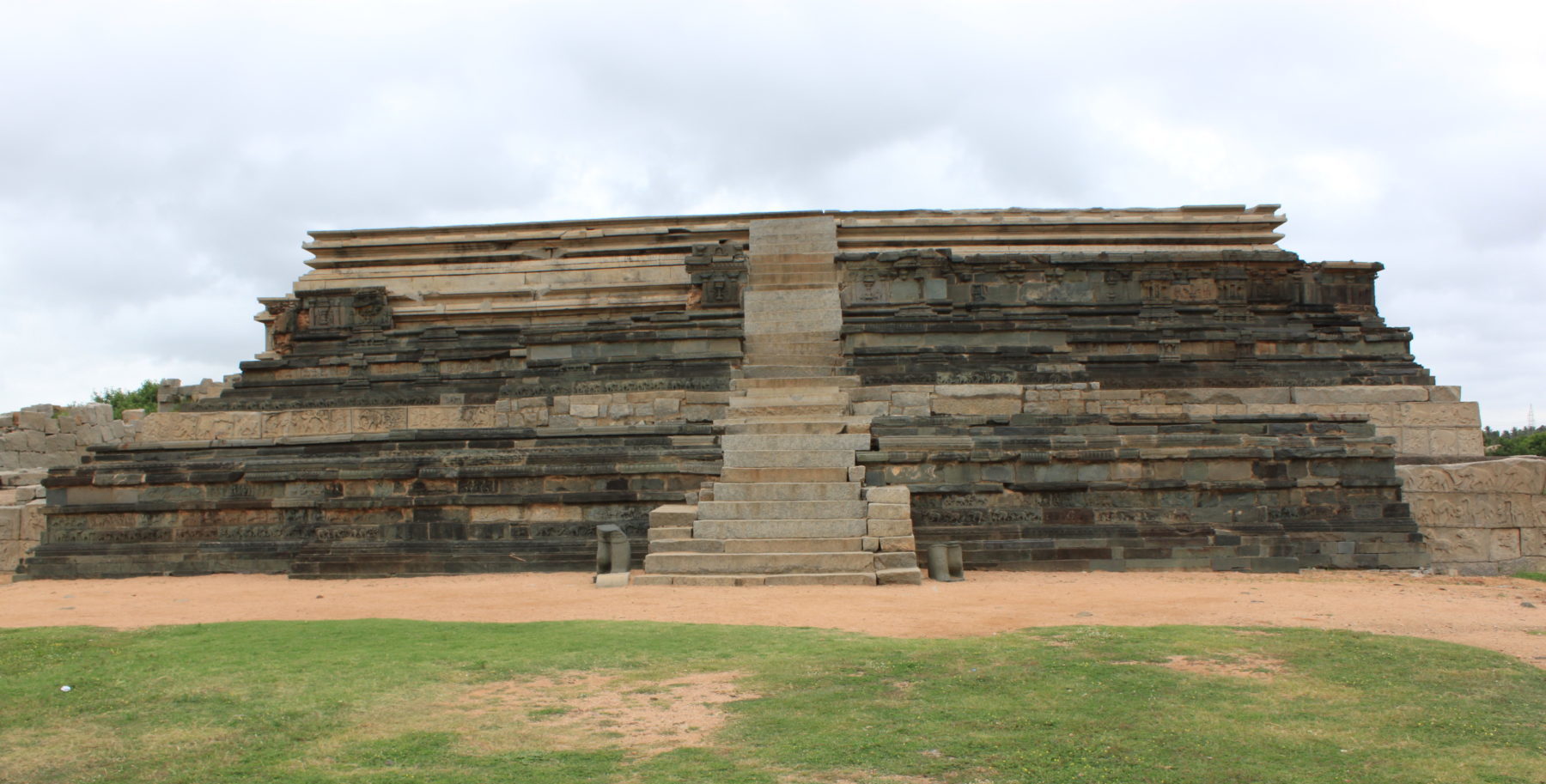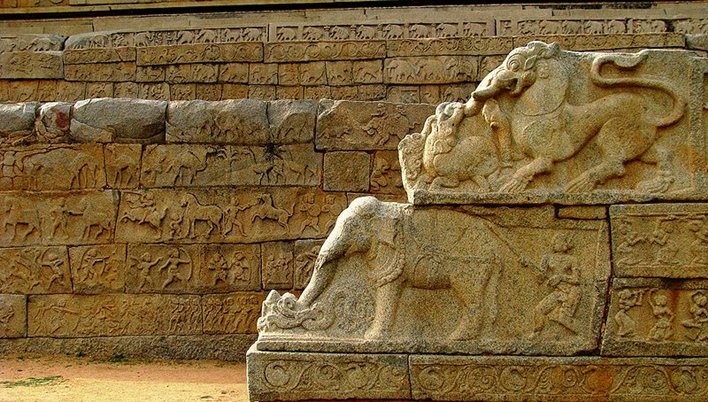Mahanavami is one of the biggest festivals of India, it is celebrated with great fervour and fanfare all across India in different forms.
In parts of North & Central India the festival celebrates victory of Lord Rama over 10 headed demon King Ravana. As part of the celebration a gala theatrical enactment of Rama’s life story is conducted. Effigies of Ravana are stuffed with firecrackers and set ablaze at night in open fields.
In rest of India it is a celebration of victory of Goddess Durga or Chamundi over the shapeshifting demon Mahishasura. The goddess takes nine forms on nine days to defeat the demon and on the 10th day we celebrate Vijaya Dashami. Celebrations take different forms in different parts of India. In the southern city of Mysore there is a grand procession with incredible tableaus and decorated elephants. In the East there is Durga Puja where pandals are setup with decorations, food stalls and variety of rituals on each of the days. In western state of Gujarat there is daily puja and celebration through Dandiya and Garba dances. This festival truly showcases the diversity of this nation, one festival celebrated in so many different way based on the local ethos and tradition. The core idea behind the festival is to celebrate victory of good over evil.

In southern India, the Kadamba Dynasty of Banavasi were known to celebrate this festival as early as 5th Century CE. The tradition was continued by the Chalukyas of Badami in 8th Century CE. In this era however the celebration was mostly ritualistic and happened indoors within temples & residences. The festival took a more celebratory form under the reign of Vijayanagara in 15th and 16th centuries. This is when grand processions we associate today with Mysore Dasara began. With the fall of Vijayanagara in 1565 CE by deccan sultanates, the celebrations were discontinued by the muslim rulers. In southern Karnataka, a minor vassal rose to power & influence led by the Wodeyars with Mysore as their capital. In 1610 CE they resumed the celebrations of Vijayadashami as Mysore Dasara. Even to this day the dasara procession in Mysore is held with great pomp and show by the Wodeyar royal family.
During the reign of Devaraya II in 1443 CE, we have an envoy of the persian court, Abdul Razzaq, make an official visit to Vijayanagara. During the time he spent at Vijayanagar he witnesses the grand festivities of Mahanavami festival and documented them.
The King [of Vijayanagara] is fond of displaying their pride, pomp, power and play, in holding every year a stately and magnificent festival, which they call Mahanavami. The King of Bidjanagar [Vijayanagar] directed that his nobles and chiefs should assemble at the royal abode. They brought with them a thousand elephants and were assembled on a broad plain, where they raised enchanting pavilions from two to five stages high, painted with all kinds of figures. Some of these pavilions were so constructed that they revolved.
In front of the plain, a pillared edifice was constructed of nine stories in height, ornamented with exceeding beauty. Between this palace and the pavilions there was an open space beautifully laid out, in which singers and story-tellers exercised their respective arts.Abdul Razzaq about Mahanavami Festival
This is the earliest known account of this festival being celebrated this way in a grand manner where the residents of the city, Royal family, noblemen and state guests all participated. It is likely that the festival transitioned from a private affair to a grand state affair sometime in the early 15th century.
In 1520 CE a portuguese horse trader named Domingo Paes was at Vijayanagara during the reign of Krishnadevaraya. His richly detailed account of Mahanavami festival is by far the most extensive of any foreign visitor to the city. In 1535 CE, Fernao Nuniz, another Portuguese horse trader, was at Vijayanagara and his writings too document the Mahanavami celebrations. Because of the sheer length of these texts, we decided not to reproduce them in this article, instead we will summarise our observations made based on their original writings.
Today if you visit the ruins, you will see many sculptures and structures that were part of the Mahanavami celebrations more than 500 years ago! These Bas-relief sculptures and structures corroborate the written account of how the festival was celebrated.

The Hazara Rama Temple, located in the center of Urban Core of Vijayanagara, was the Royal temple attached to the palace area of the King. This temple served as the start point for the procession. The outer walls of this temple have stunning relief sculptures that depict the grand royal procession of Vijayadashami or Mahanavami. The sculptures are arranged in five rows, and conceived as continues frieze that is read in a clockwise (right to left) direction. The Bottom row is a long procession of decorated elephants. The second row is procession of riderless horses led by grooms. The third row comprises of a variety of military displays and martial arts. The fourth row shows women entourage dancing, singing and playing musical instruments. Fifth row continues the celebration of dance and music, with scenes of gardens and playing with coloured water.

The other important structure that is central to the Mahanavami procession is the great platform called Mahanavami Dibba. This is a three tier pyramidal structure made of granite, it also has some portions made of schist stone. On top of this platform there used to be two tiers hall made of beautifully carved (and decorated) wooden pillars and roof. This structure would house the idol of festival Goddess and the throne of the King during the procession. Today only the bottom three tiers made of stone survive, the outer walls of which are richly carved with bas-relief work representing sculptures of Wrestlers (Garadi or Kusti), Hunters, Horse traders, Camel traders, gymnasts, street acts jugglers, conjurers and illusionists, dancers, instrumentalists, singers, Kings, Door attendants, army chieftains and showcases all the activities of the Mahanavami celebrations.

By making the capital epicenter of Mahanavami celebrations in the world, the rulers of Vijayanagara proclaimed to be the protectors of all that is good in the world from evil. Mahanavami was a martial festival as much as a religious one. The Raya showed off his military might, his weapons, his best warriors, his armoured cavalry and war elephants. Nobleman and chieftains from around the empire gathered every year at the capital city during Mahanavami to pay tributes, provide accounts and pledge loyalty to the the King.
As part of our Hampi Heritage Tour we take the participants to Mahanavami Dibba and the Hazara Rama Temple. Here we explain the various festivals celebrated in the capital city and medieval foreign travellers account of their experience. We walk you through the archeological evidence and teach you to interpret relief sculptures depicting Mahanavami celebrations. So if you’d like to learn more about the way this festival was celebrated then sign up for our tour!
Sadhguru is an Indian yogi, mystic and author. Listen to him narrating the story of Vijayanagara in this 2 part video series.
..As part of our Hampi Heritage Tour we take the participants to Mahanavami Dibba and the Hazara Rama Temple. Here we explain the various festivals celebrated in the capital city and medieval foreign travellers account of their experience. We walk you through the archeological evidence and teach you to interpret relief sculptures depicting Mahanavami celebrations. So if you’d like to learn more about the way this festival was celebrated then signup for our tour!